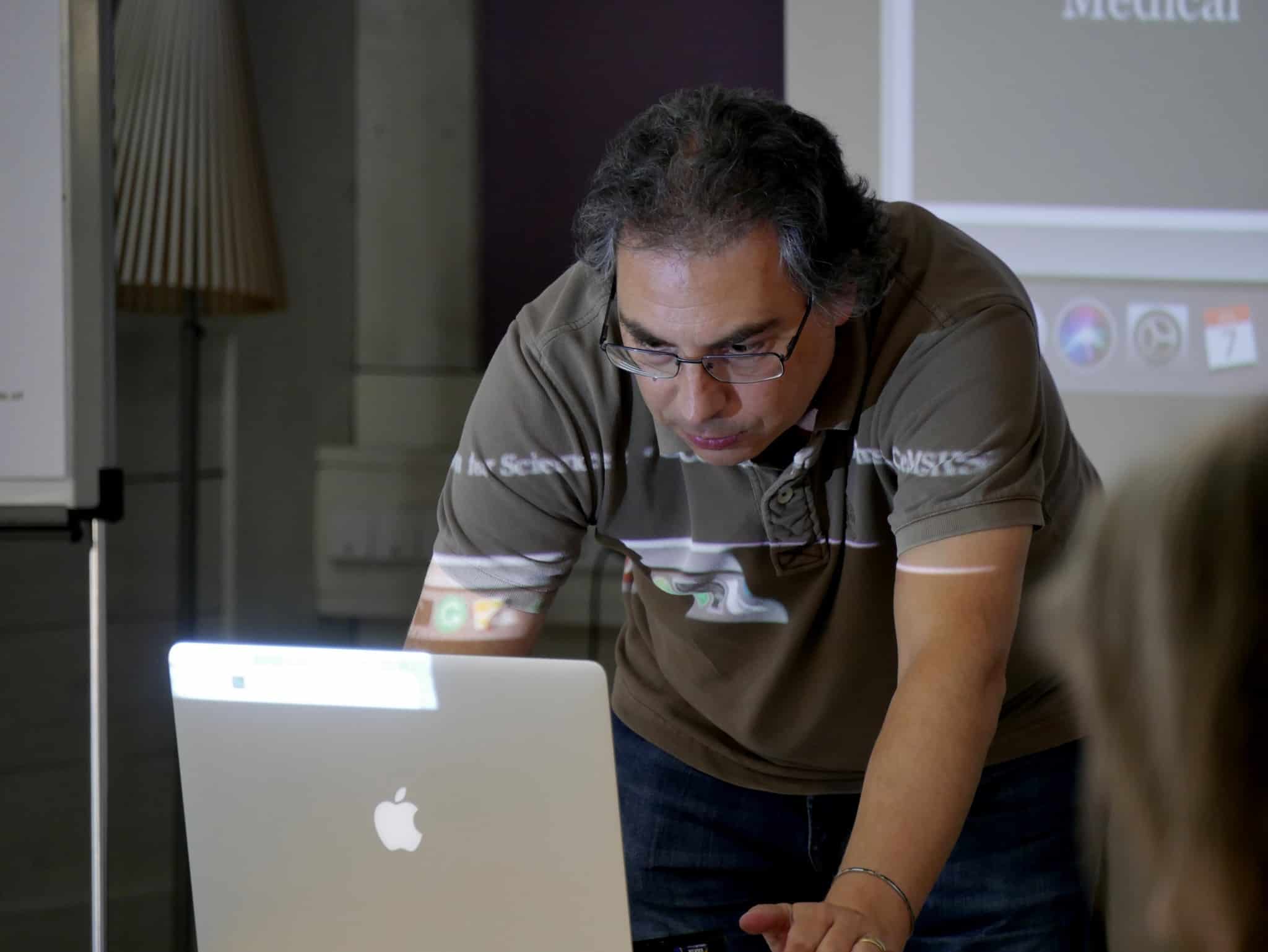NEW IDEAS IN COMPLEXITY SCIENCE
On May 24th, 2018, the First External Faculty Meeting of the Hub started with a public conference.
In short talks complexity scientists from all around globe shared their visions on the question “Complexity: Where do we go from here?”
What are the open, the most pressing, the most promising questions to an understanding of complexity and Big Data?
Find the talks of all conference participants (in order of appearance) on our Youtube channel in the playlist of the conference.
An overview with photographs of the event and links to all available slides can be found here.
VITO D. P. SERVEDIO
“HOW CAN WE COMMUNICATE COMPLEXITY SCIENCE TO THE PUBLIC?”
Communicating science to the general public and non-scientists is always difficult, and complexity science is even harder. This problem is tackled by Vito D. P. Servedio, a data scientist at the Hub.
The most famous equation of all is E=mc2, Vito starts: It is even printed on t-shirts. But why does the public remember it? Perhaps because of its connection to the atomic bomb, the striking visual imagery, and the fear it induces? Another equation, F=mg (force in newtons = mass times gravity) is just as important, but lacks a good visual link. “You don’t find this on t-shirts,” Vito points out.
If even fairly simple science is hard to communicate, complexity science is much worse. But Vito believes it can be done. The secret, he says, is participation. “One simple way f.i. is developing visualisations to allow people to see what a model is doing.”
“We have two kinds of people,” he continues. “We have the scientist here who says ‘I don’t need these kinds of things, models are in my mind, I can run the models in my mind’,” Vito says, adding that visualisations “could be the way to address the other 99.99 percent of people to understand better what we are doing.”
Like Vittorio Loreto, Vito also shows the video of conference participants building a city out of Lego, a very tangible method of public participation. There is also the possibility of gamification, Vito says, of developing interactive mobile game apps to test out theories. In one game for example, players can attempt to modify and improve the Vienna transport network within a given budget. Players are ranked, adding a competitive element.
Vito and his team are developing virtual reality, multi-sensory, immersive gaming techniques, to further improve such games.
See the video in full lenght here:
About the study
The study “XY,” by XY and XY, was published in XY.

